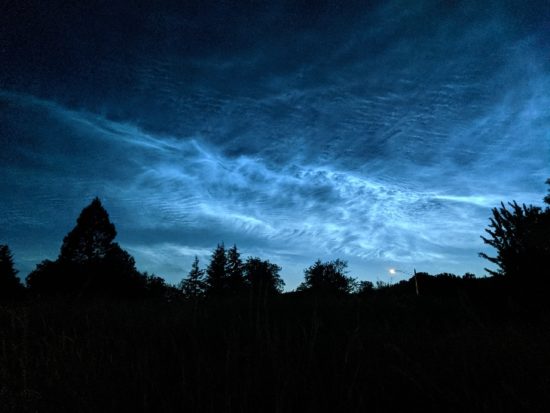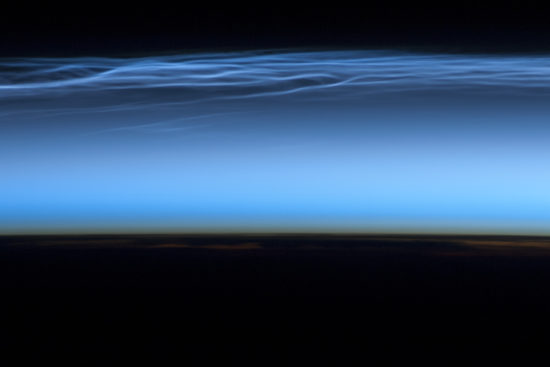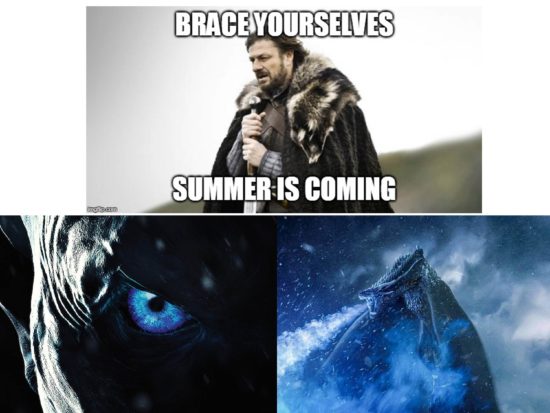Over the next few weeks, mid-latitude observers might experience the best noctilucent cloud viewing of their lifetimes.

Extremely high-altitude noctilucent (night-shining) clouds viewed from Corvallis, Oregon on June 10, 2019 (Tucker Shannon, Google Pixel phone).
Observers over the northern half of the United States are reporting something they have never seen before — electric-blue noctilucent (night-shining) clouds. They are wispy in appearance, and continuously change shape. They can be seen when the sun is about 6 to 16 deg. below the horizon, so about 1 to 2 hours after sunset or before sunrise. During that time of night the sun is still shining on these clouds, but not on any normal weather-related clouds.
In the late spring every year, people at far northern latitudes have often seen these on clear or partly-cloudy evenings. But solar-minimum conditions, with few if any sunspots, are causing cooling in the extreme upper atmosphere around 80 km (~50 miles) high where the lowest atmospheric temperatures are recorded, approaching -150 deg. F (-100 deg. C). That altitude is above 99.999% of the air in the atmosphere.

Adding to the spectacular electric blue displays is increasing atmospheric methane, which gets converted to water vapor at these altitudes, and increasing atmospheric carbon dioxide, which causes enhanced cooling of the upper atmosphere. The result is that the conditions necessary for NLC formation are extending farther south than ever before.

The wispy and undulating appearance of the clouds is due to upward-propagating gravity (air density) waves that cause temperatures to rise and fall, and the clouds form in the colder portions of those waves. Ice grows on meteor dust particles, creating a (nearly) outer space version of cirrus clouds. Time lapse photography has been used to show how the clouds change shape as the gravity waves well up through the extremely cold upper mesosphere:
2017 NOCTILUCENT CLOUD CHASING SEASON TEASER – 4K (UHD) from Night Lights Films on Vimeo.
If you miss seeing them in the next several weeks, take heart — solar minimum conditions should persist until the next NLC season arrives, making the summer of 2020 a good viewing opportunity, too.
You can see recent NLC photos from around the Northern Hemisphere, updated daily, here.

 Home/Blog
Home/Blog



